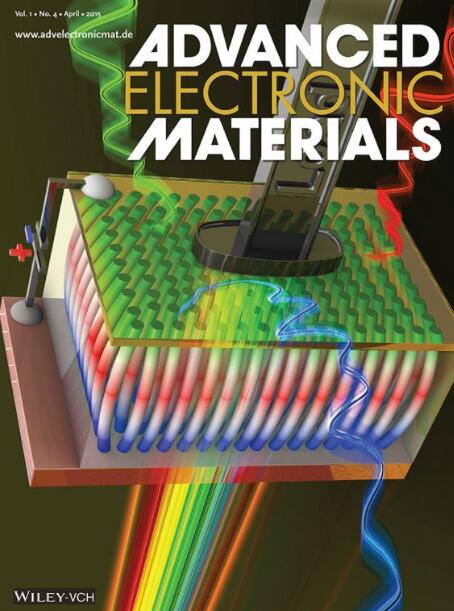基于半导体物理和热力学方法的有机电化学晶体管直流紧凑模型
IF 5.3
2区 材料科学
Q2 MATERIALS SCIENCE, MULTIDISCIPLINARY
引用次数: 0
摘要
最近在可印刷电子和生物界面方面的进展推动了人们对生物传感器和神经形态应用的有机电子的兴趣,为传统的硅技术提供了有价值的补充。在有机电子学中,有机电化学晶体管(OECTs)因其高跨导性、生物相容性和双离子-电子电荷传输能力而备受关注。虽然OECTs表现出了强大的前景,但由于制造和材料的不一致性,对电荷传输的了解有限,以及缺乏标准模型,它们的可变性阻碍了它们的集成。一个强大的,基于物理的紧凑模型可以弥合这些差距,并促进该设备技术的广泛采用。本研究提出了一个基于物理的oect直流紧凑模型,利用上述阈值区域的能斯特方程将电化学相互作用与亚阈值区域中依赖漏极偏置的扩散电荷输运结合起来,通过双曲正切跃迁进行统一。利用Poole-Frenkel迁移率模型集成了阈值电压滚转效应和空穴迁移率对漏极电压的依赖关系。该模型与四种不同几何形状的p型聚(3,4 -乙烯二氧噻吩):聚苯乙烯磺酸盐(PEDOT: PSS) OECTs的实验数据进行了验证,结果与测量结果非常吻合。该模型可靠地捕获直流特性,使其适合集成到电路仿真工具中,以支持更广泛的应用开发。本文章由计算机程序翻译,如有差异,请以英文原文为准。
A DC Compact Model of an Organic Electrochemical Transistor Based on a Semiconductor Physics and Thermodynamic Approach
Recent progress in printable electronics and biointerfaces has driven a growing interest in organic electronics for biosensor and neuromorphic applications, offering a valuable complement to traditional silicon technologies. Among organic electronics, organic electrochemical transistors (OECTs) have garnered significant attention for their high transconductance, biocompatibility, and dual ionic‒electronic charge transport capabilities. While OECTs show strong promise, their variability due to fabrication and material inconsistencies, limited insight into charge transport, and absence of standard models hinder their integration. A robust, physics‐based compact model can bridge these gaps and facilitate broader adoption of this device technology. This work presents a physics‐based DC compact model for OECTs, integrating electrochemical interactions using the Nernst equation in the above threshold regime with drain bias‐dependent diffusive charge transport in the subthreshold regime, unified by a hyperbolic tangent transition. It integrates the threshold voltage roll‐off effect and the drain voltage‐dependence of the hole mobility using the Poole‒Frenkel mobility model. The model is validated against experimental data from four distinct geometries of p‐type poly(3,4‐ethylenedioxythiophene):polystyrene sulfonate (PEDOT: PSS) OECTs, which show excellent agreement with the measurements. The model reliably captures DC characteristics, making it suitable for incorporation into circuit simulation tools to support broader application development.
求助全文
通过发布文献求助,成功后即可免费获取论文全文。
去求助
来源期刊

Advanced Electronic Materials
NANOSCIENCE & NANOTECHNOLOGYMATERIALS SCIE-MATERIALS SCIENCE, MULTIDISCIPLINARY
CiteScore
11.00
自引率
3.20%
发文量
433
期刊介绍:
Advanced Electronic Materials is an interdisciplinary forum for peer-reviewed, high-quality, high-impact research in the fields of materials science, physics, and engineering of electronic and magnetic materials. It includes research on physics and physical properties of electronic and magnetic materials, spintronics, electronics, device physics and engineering, micro- and nano-electromechanical systems, and organic electronics, in addition to fundamental research.
 求助内容:
求助内容: 应助结果提醒方式:
应助结果提醒方式:


